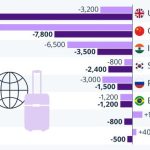In a new study, researchers identified a molecule produced by a particular type of brain cell that reversed the cognitive decline seen in both healthy aging and dementia. It provides a deeper understanding of the aging process and a potential target for future treatments.
Aging causes a decline in cognition, as does dementia, including Alzheimer’s disease (although the former is a natural process, the latter is pathological). For years, scientists have been investigating ways of reversing that decline, and there have been some promising discoveries.
In a new study, a collaboration between the Federal University of Rio de Janeiro (UFRJ) and the University of São Paulo (USP) in Brazil, researchers examined the impact of hevin, a molecule secreted by star-shaped brain cells called astrocytes, on cognitive decline in older mice with and without dementia.
“Hevin is a well-known molecule involved in neural plasticity,” said the study’s co-corresponding author, Flávia Alcantara Gomes, PhD, head of the Cellular Neurobiology Laboratory in the Institute of Biomedical Sciences at UFRJ. “It’s naturally secreted by cells in the central nervous system that support the functioning of neurons and are known as astrocytes. We found that the overproduction of hevin is capable of reversing cognitive deficits in aged animals by improving the quality of synapses in these rodents.”
Astrocytes are large cells that actively support and protect nerve cells (neurons), including the connections, or synapses, between them. They are involved in the formation, function, and elimination of synapses, the regulation of brain chemistry, and even influence synaptic plasticity, the brain’s ability to adapt and change over time. Astrocytes secrete hevin, a type of protein that helps regulate how synapses form and function by influencing how neurons interact with one another.
The researchers started by examining public health data and found that hevin levels were decreased in the brains of people with Alzheimer’s disease compared to healthy people of the same age. Moving on to mice, they found that hevin was also decreased in mouse models of Alzheimer’s disease. This led the researchers to consider whether manipulating the levels of hevin in astrocytes would affect the signs and symptoms of Alzheimer’s disease.
After causing the overproduction of hevin in some mice and not in others, the researchers found that boosting hevin levels prevented cognitive decline in both the Alzheimer’s mouse models and the healthy middle-aged mice. Interestingly, though, the researchers observed that elevated hevin levels didn’t have any effect on beta-amyloid plaques, the buildup of which is a hallmark of Alzheimer’s disease.
“To our surprise, although the cognitive deficit was reversed in Alzheimer’s model animals, there was no change in the content of the plaques,” said lead and co-corresponding author Felipe Cabral-Miranda, PhD, a scientist at UFRJ’s Institute of Biomedical Sciences. “This highlights the complexity of the disease in terms of having a multifactorial mechanism. This is illustrated by older people who have plaque formation but show no symptoms of the disease.
“Although there’s still no consensus among researchers, I work with the hypothesis that the formation of beta-amyloid plaques isn’t the cause of Alzheimer’s. And the results of the study, by finding proof of concept for a molecule that can reverse cognitive decline without affecting beta-amyloid plaques, support the hypothesis that these, although involved in the mechanisms of the pathology, aren’t enough to cause Alzheimer’s.”
There is still a long way to go from these initial animal studies to a treatment for humans. But the study’s findings are certainly promising.
“Of course, in the future it’ll be possible to develop drugs that have the same effect as hevin,” Gomes said. “For now, the fundamental benefit of this work is a deeper understanding of the cellular and molecular mechanisms of Alzheimer’s disease and the aging process. The originality lies in understanding the role of the astrocyte in this process. We’ve taken the focus away from neurons, shedding light on the role of astrocytes, which we’ve shown could also be a target for new treatment strategies for Alzheimer’s disease and cognitive impairment.”
The study was published in the journal Aging Cell.
Source: Agência FAPESP











